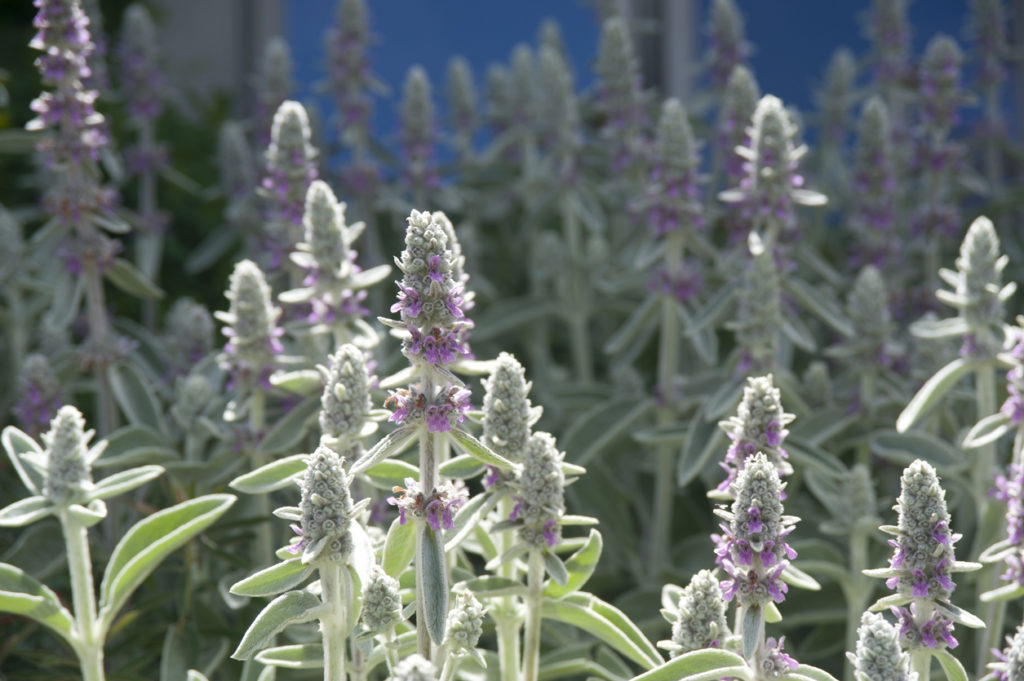Deer Resistant Plants – A Guide

Deer resistant plants offer a safe, effective strategy for keeping deer from damaging your gardens. These plants add another dimension of beauty and color to landscapes, while repelling deer through smell, texture, and taste. This month’s blog will provide an overview of plants that help keep the deer away.
Deer In The Garden
Spring summons nature’s gifts like no other season. As landscapes burst with blooms, the deer line up for the bountiful buffets. Their favorite entrée after a long winter is unprotected new growth. When deer make meals of your plants, they strip shoots, flower buds, and foliage, and tear woody stems.
If left unchecked, your plants can be irreparably damaged. And ailing plants attract animals and insects, which can lead to more diseases in your garden.
How Deer Resistant Plants Help
One of the main benefits of deer resistant plants is that they gently send deer on their way. The dining experience includes unpleasant scents, uncomfortable textures, and unappealing tastes. These are also some of the very plants that are delightfully fragrant and beautiful to humans!
Smell Aversion
Deer have a herculean sense of smell, with 297 million scent receptors, vs. 220 million for dogs and only 5 million for people. Aromatic plants that deer dislike include chives, fennel, garlic, lavender, peonies, and ornamental salvias.
Texture Tickles
Fuzzy, hairy, and leathery foliage can cause disturbing “mouth tickles” for deer. Some top choices are agave, lamb’s ears, and sunflowers. Determination may drive deer to sample these plants, but they typically change their minds.
Taste Turnoff
The “taste turnoff” is another means for deterring deer. Bitter and spicy tasting plants are not favored. Deer are quick to identify toxic plants (such as daffodils, foxgloves, and poppies), so they usually won’t consume these blooms.
Deer Resistant Plants By State
There are plenty of plants that can turn deer away from your property, through smell, texture, and/or taste. There are regional differences regarding which plants deer will not eat, so choose plants suited to your area for best results. Visit this link for deer-resistant plants by state.
Strategic Placements of Deer Resistant Plants
Deer resistant plants around property perimeters can serve as “border guards”. This tactic may keep deer from getting into your gardens. You can add another measure of protection by arranging deer resistant shrubs around your hostas, roses, and other treasures.
The #1 Deer Repellent For Extra Protection
Deer are strong, determined animals, especially when it comes to feeding themselves and their families. The best deer deterrent plan will include more than one strategy.
Provide “on plant” protection to varieties that deer love with eco-friendly Bobbex Deer Repellent. In an independent study conducted by the State of Connecticut Department of Forestry and Horticulture, Bobbex was determined to be the Best Deer Repellent tested, ranking higher than any other brand.
The eco-friendly topical sprays coat surfaces with a clear film that helps plants retain moisture during dry conditions. In addition, Bobbex Repellents contain several organic elements, making them beneficial for vegetation development. All Bobbex products are safe for plants, people, pets, wildlife, and aquatic life.
With a couple of earth-friendly strategies in place, your plants are sure to thrive and color the landscapes this spring!
